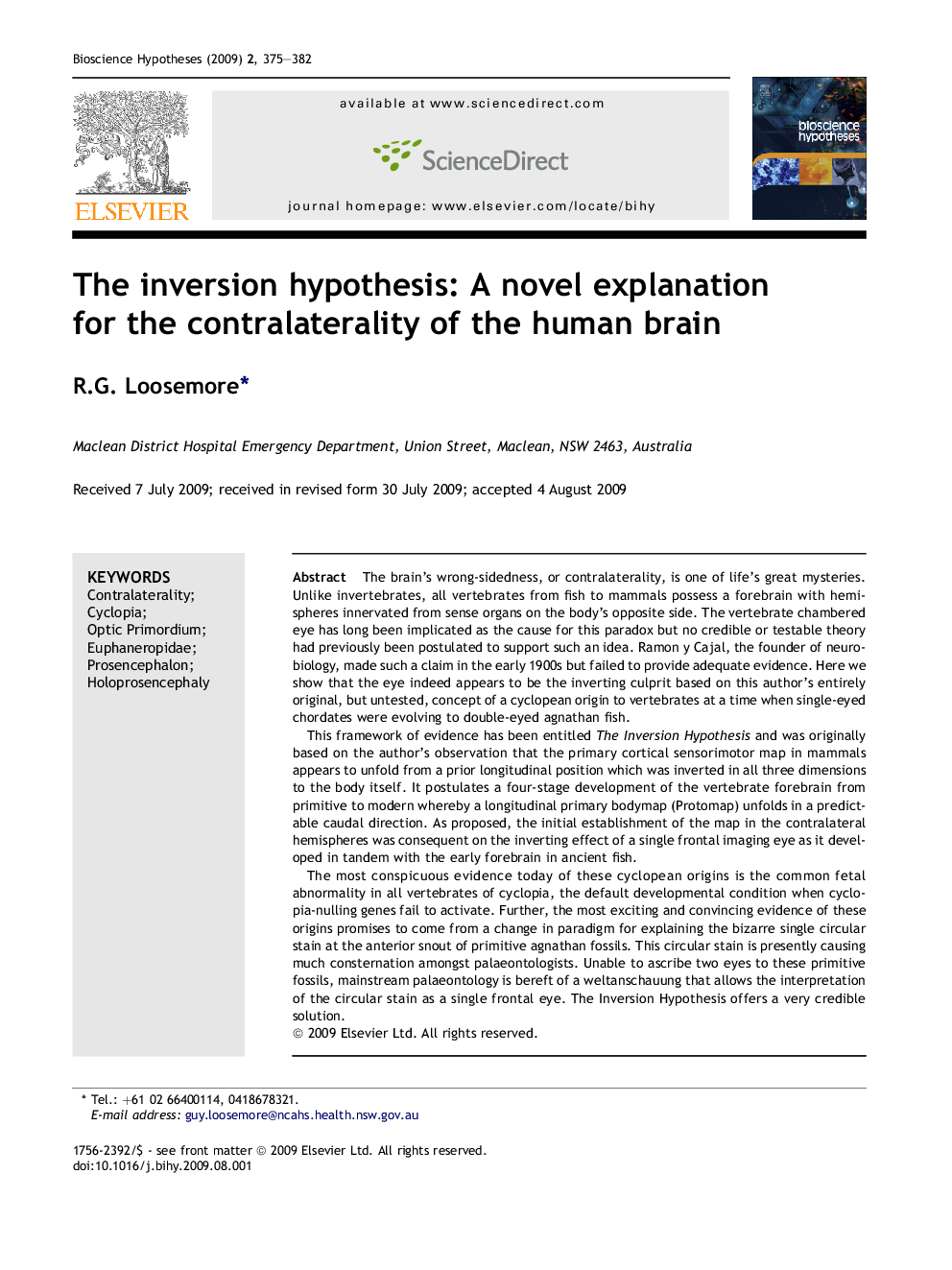| کد مقاله | کد نشریه | سال انتشار | مقاله انگلیسی | نسخه تمام متن |
|---|---|---|---|---|
| 2034766 | 1543057 | 2009 | 8 صفحه PDF | دانلود رایگان |

The brain's wrong-sidedness, or contralaterality, is one of life's great mysteries. Unlike invertebrates, all vertebrates from fish to mammals possess a forebrain with hemispheres innervated from sense organs on the body's opposite side. The vertebrate chambered eye has long been implicated as the cause for this paradox but no credible or testable theory had previously been postulated to support such an idea. Ramon y Cajal, the founder of neurobiology, made such a claim in the early 1900s but failed to provide adequate evidence. Here we show that the eye indeed appears to be the inverting culprit based on this author's entirely original, but untested, concept of a cyclopean origin to vertebrates at a time when single-eyed chordates were evolving to double-eyed agnathan fish.This framework of evidence has been entitled The Inversion Hypothesis and was originally based on the author's observation that the primary cortical sensorimotor map in mammals appears to unfold from a prior longitudinal position which was inverted in all three dimensions to the body itself. It postulates a four-stage development of the vertebrate forebrain from primitive to modern whereby a longitudinal primary bodymap (Protomap) unfolds in a predictable caudal direction. As proposed, the initial establishment of the map in the contralateral hemispheres was consequent on the inverting effect of a single frontal imaging eye as it developed in tandem with the early forebrain in ancient fish.The most conspicuous evidence today of these cyclopean origins is the common fetal abnormality in all vertebrates of cyclopia, the default developmental condition when cyclopia-nulling genes fail to activate. Further, the most exciting and convincing evidence of these origins promises to come from a change in paradigm for explaining the bizarre single circular stain at the anterior snout of primitive agnathan fossils. This circular stain is presently causing much consternation amongst palaeontologists. Unable to ascribe two eyes to these primitive fossils, mainstream palaeontology is bereft of a weltanschauung that allows the interpretation of the circular stain as a single frontal eye. The Inversion Hypothesis offers a very credible solution.
Journal: Bioscience Hypotheses - Volume 2, Issue 6, 2009, Pages 375–382